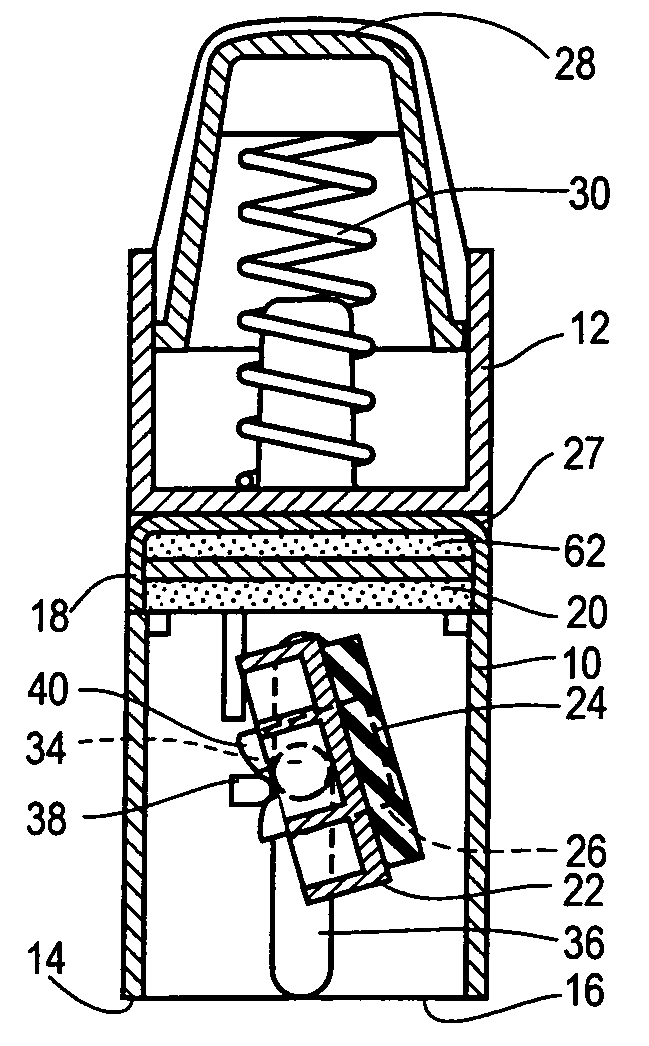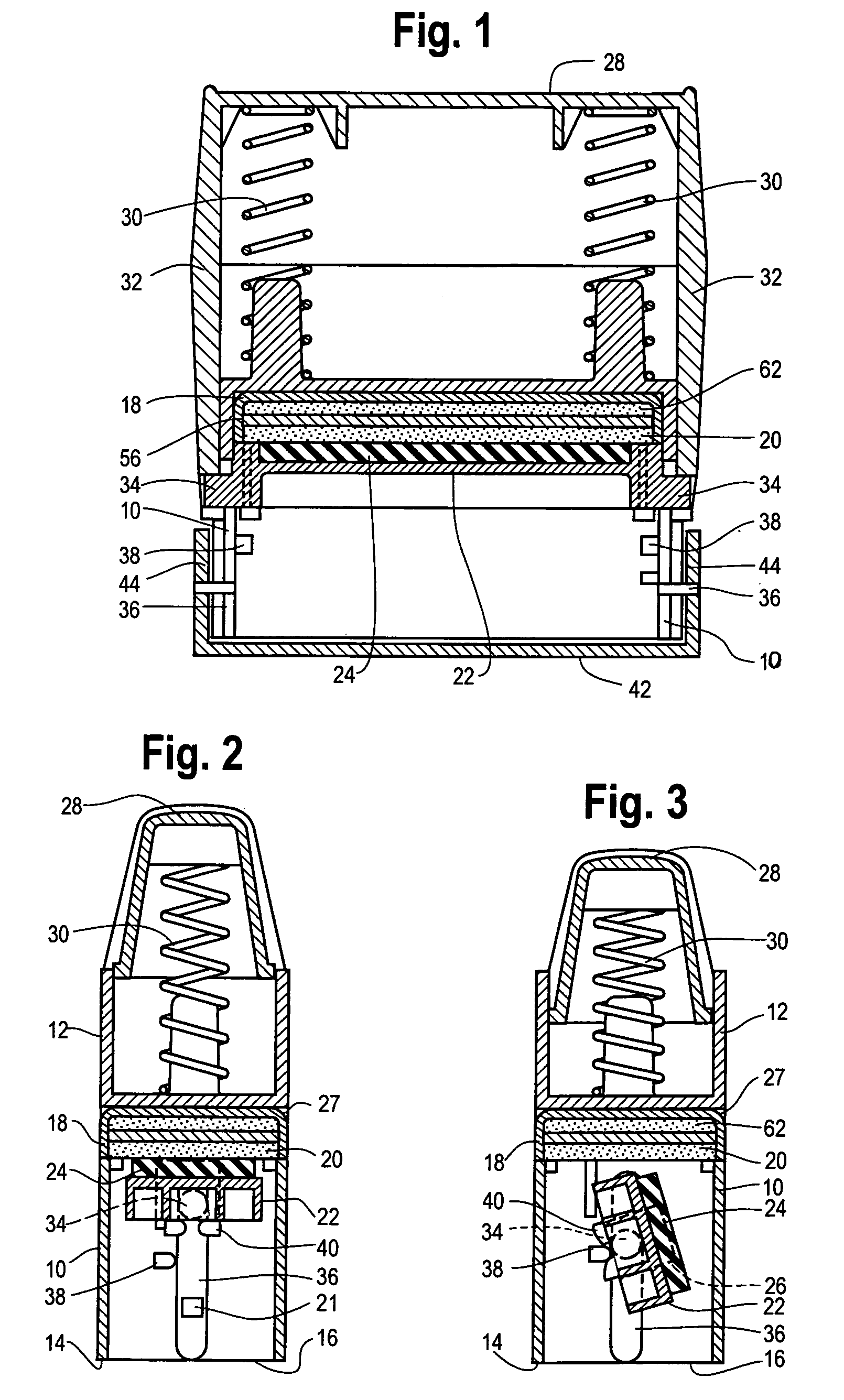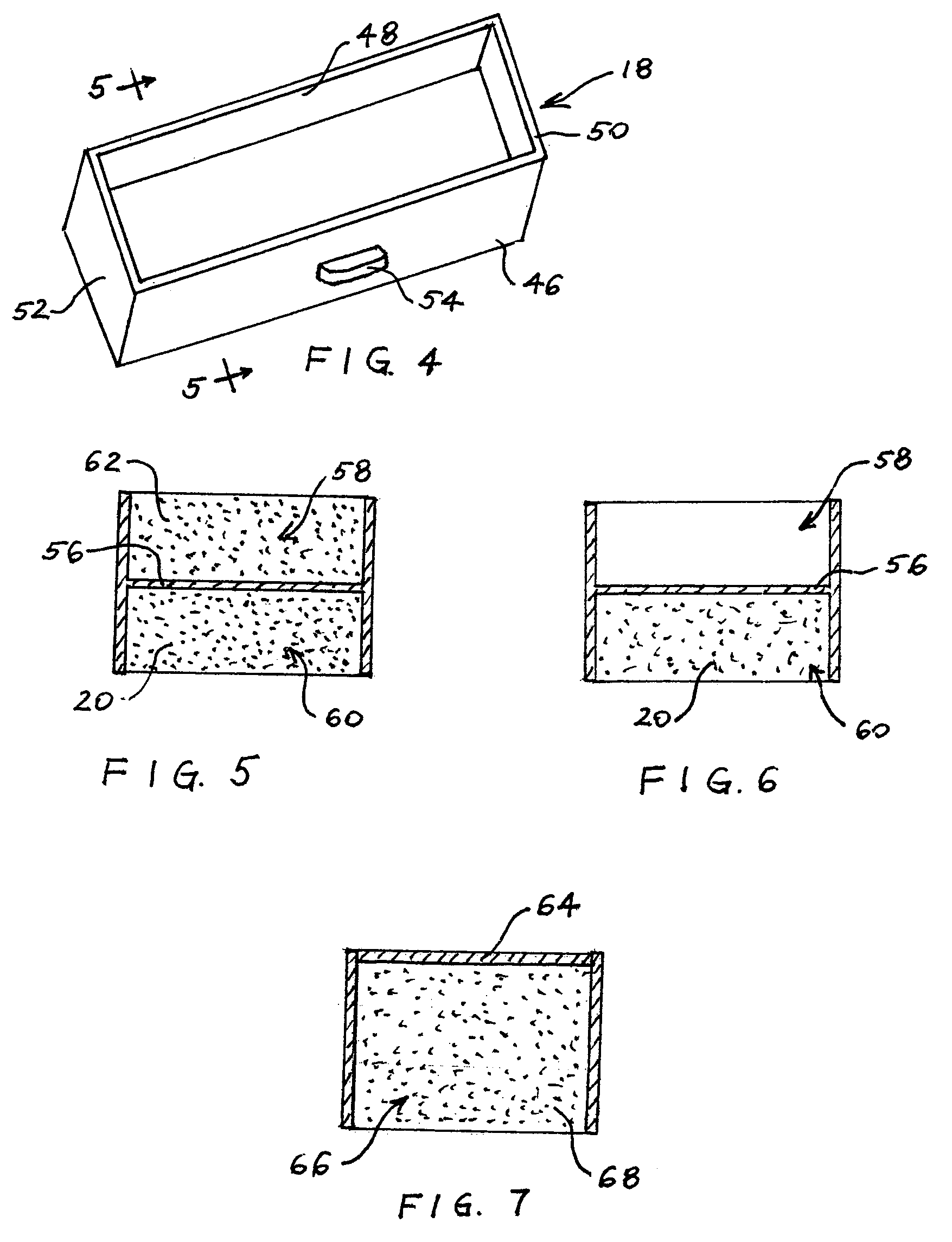Ink pad holder for self-inking stamp
a self-inking, ink pad technology, applied in stamping, printing, coatings, etc., can solve the problems of slow stamping process, messy procedure, adding too little or too much ink to the ink chamber, etc., to achieve the effect of easy reversibility and increase the quantity of ink stored in a single ink pad
- Summary
- Abstract
- Description
- Claims
- Application Information
AI Technical Summary
Benefits of technology
Problems solved by technology
Method used
Image
Examples
Embodiment Construction
[0021]Turning first to FIGS. 1 and 2, there is illustrated a self-inking stamp comprising a lower frame part 10 and an upper frame 12. At the bottom of the lower frame is a bottom edge 14 for placing on an image receiving surface 16 to be stamped. There is an ink pad holder 18 which will be more fully described later, but for initial discussion, is seen as retaining a lower ink pad 20. A stamp insert 22 is movable to and fro between the lower ink pad 20 and the image receiving surface 16. The stamp insert 22 supports a printing plate 24 with an image forming surface 26. An actuating handle 28 is at the top of the stamp. The ink pad holder 18 is frictionally received in a slot 27 in the side of the upper frame 12 so that it can be easily slid into and out of the slot 27.
[0022]In its non-depressed state, the printing plate 24 is held in intimate contact with the lower ink pad 20 by springs 30. The actuating handle 28 surrounds the lower frame part 10 with two side legs 32 and is displ...
PUM
 Login to View More
Login to View More Abstract
Description
Claims
Application Information
 Login to View More
Login to View More - R&D
- Intellectual Property
- Life Sciences
- Materials
- Tech Scout
- Unparalleled Data Quality
- Higher Quality Content
- 60% Fewer Hallucinations
Browse by: Latest US Patents, China's latest patents, Technical Efficacy Thesaurus, Application Domain, Technology Topic, Popular Technical Reports.
© 2025 PatSnap. All rights reserved.Legal|Privacy policy|Modern Slavery Act Transparency Statement|Sitemap|About US| Contact US: help@patsnap.com



